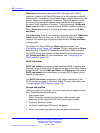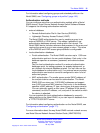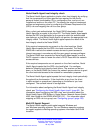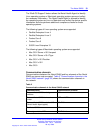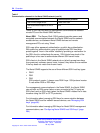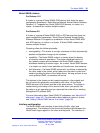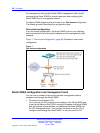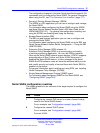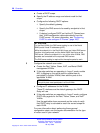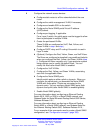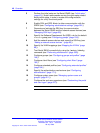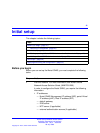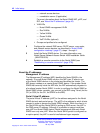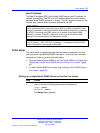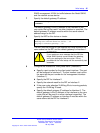
38 Overview
a Create a DHCP scope.
b Specify the IP address range and subnet mask for that
scope.
c Configure the following DHCP options:
• Specify the default gateway.
•
Specify the DNS server to be used by endpoints in that
scope.
• If desired, configure DHCP so that the IP Phones learn
their VLAN configuration data automatically from the
DHCP server. For more information, see “Configuring
DHCP to auto-configure IP Phones” (page 493).
ATTENTION
For the Red VLANs, the DNS server setting is one of the Nortel
SNAS portal Virtual IP addresses (pVIP).
While the endpoint is in the Red VLAN, there are limited DNS server
functions to be performed, and the Nortel SNAS itself acts as the
DNS server. When the endpoint is in one of the other VLANs, DNS
requests are forwarded to the corporate DNS servers.
The DNS server setting is required for the captive portal to work.
3 Configure the network core router:
a Create the Red, Yellow, Green, VoIP, and Nortel SNAS
management VLANs.
b If the edge switches are operating in Layer 2 mode, enable
802.1q tagging on the uplink ports to enable them to
participate in multiple VLANs, then add the ports to the
applicable VLANs.
ATTENTION
The uplink ports must participate in all the VLANs.
c Configure IP addresses for the VLANs.
These IP interfaces are the default gateways the DHCP
Relay will use.
d If the edge switches are operating in Layer 2 mode, configure
DHCP relay agents for the Red, Yellow, Green, and VoIP
VLANs.
Use the applicable show commands on the router to verify
that DHCP relay is activated to reach the correct scope for
each VLAN.
For more information about performing these general
configuration steps, see the regular documentation for the type
of router used in your network.
Nortel Secure Network Access Switch
Using the Command Line Interface
NN47230-100 03.01 Standard
28 July 2008
Copyright © 2007, 2008 Nortel Networks
.



